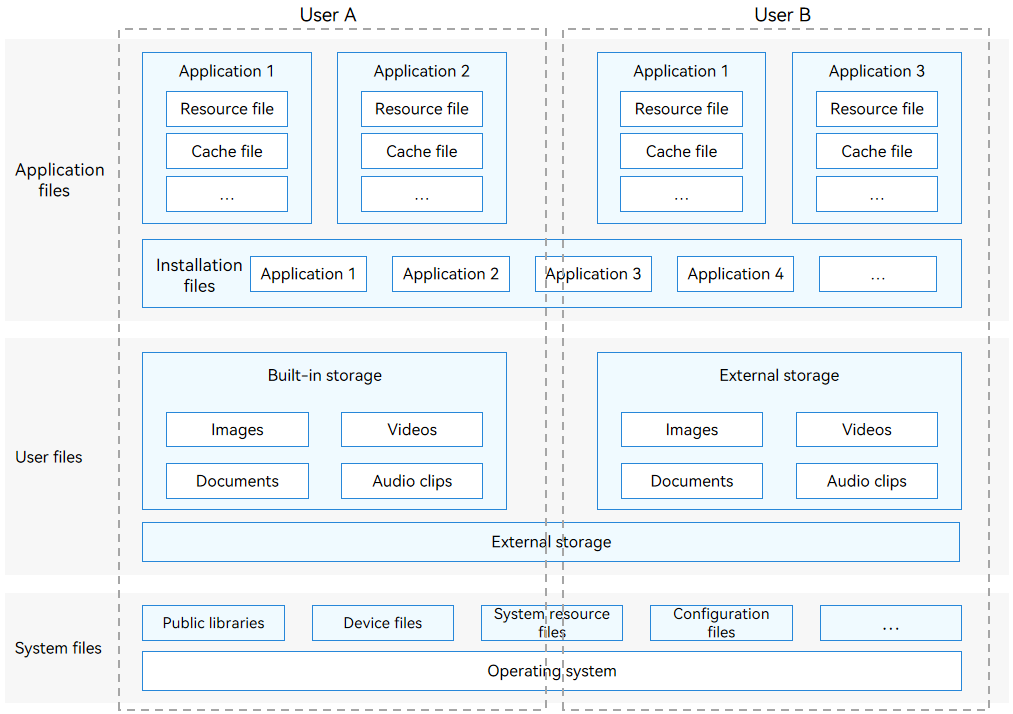harmony 鸿蒙File Management Overview
File Management Overview
The data in an operating system (OS) can be classified into the following types based on the data structure:
Structured data: data that can be defined in a unified data model and is generally stored in a database. In OpenHarmony application development, the management of structured data is implemented by the data management module.
Unstructured data: data that does not conform to any predefined data structure or model and cannot be easily presented in two-dimensional database tables. Unstructured data includes files in a variety of formats, such as documents, images, videos, and audio clips. In OpenHarmony application development, the management of unstructured data is implemented by the file management module, which will be elaborated in this document.
In the file management module, the files can be classified into the following types based on the file owner:
Application files: files of an application, including the installation files, resource files, and cache files of the application.
User files: files of a user who has logged in to the device. User files include the user’s images, video and audio clips, and documents.
System files: files irrelevant to applications and users. System files include public libraries, device files, and system resource files. The system files do not need to be managed by developers and are not described in this document.
The file systems can be classified into the following types based on the file storage location (data source location):
Local file system: allows access to the files stored on a device and its external storage devices (such as USB flash drives and removable hard drives). The local file system is the most basic file system and is not described in this document.
Distributed file system: allows access to files across devices, which include not only the local device and its external storage devices, but also the devices connected over a computer network.
Figure 1 Files in an OS

你可能感兴趣的鸿蒙文章
harmony 鸿蒙Accessing Application Files
harmony 鸿蒙Backup and Restoration Accessed by Applications
harmony 鸿蒙Application Data Backup and Restoration Overview
harmony 鸿蒙Backup and Restoration Triggered by System Applications
harmony 鸿蒙Application File Overview
harmony 鸿蒙Uploading and Downloading an Application File
harmony 鸿蒙Obtaining Application and File System Space Statistics
harmony 鸿蒙Application Sandbox Directory
harmony 鸿蒙Developing a File Manager Application (for System Applications Only)
- 所属分类: 后端技术
- 本文标签:
热门推荐
-
2、 - 优质文章
-
3、 gate.io
-
8、 golang
-
9、 openharmony
-
10、 Vue中input框自动聚焦